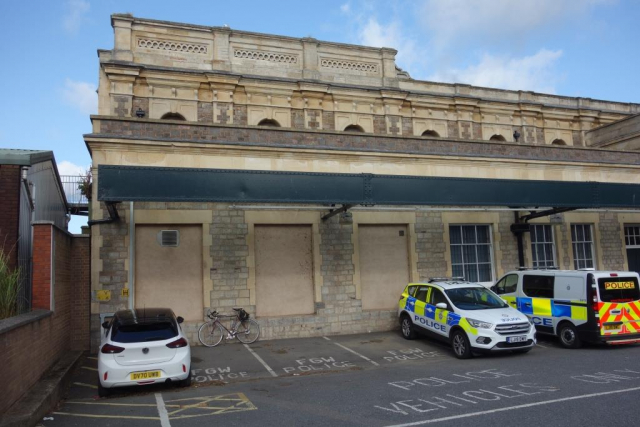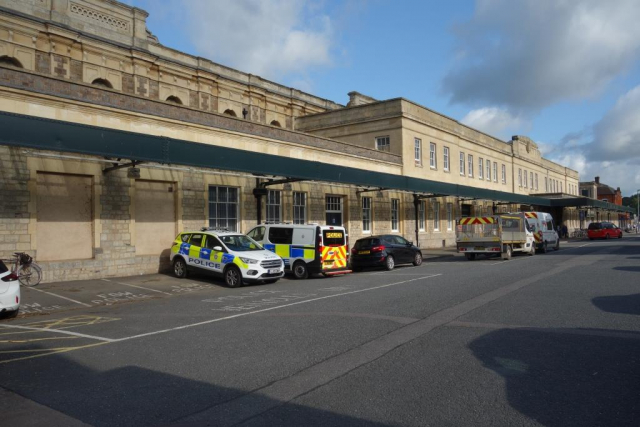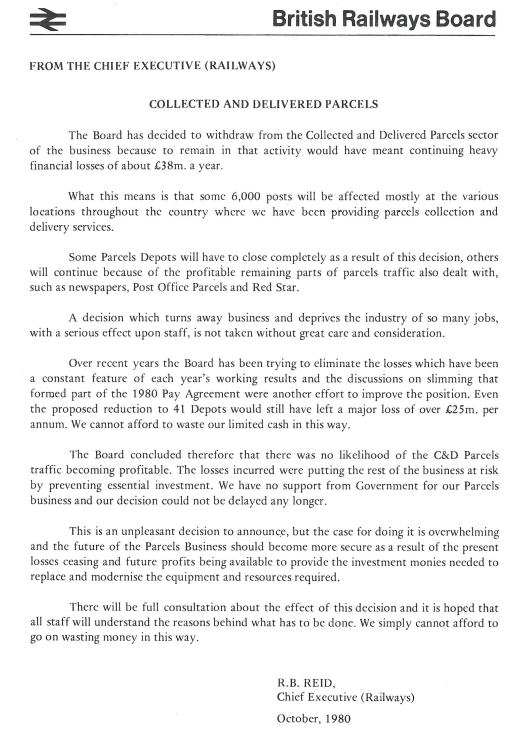Around 1977, British Rail management decided to revive the parcels collection and delivery service which earlier had been lost or contracted to National Carriers Limited.
At St. David’s, No. 2 platform and Hyde Park Siding were shortened and a steel framed building was erected on made up ground. A fleet of vans was bought and staff recruited.
The original office, where the scout remembered sending “Luggage in Advance,” was closed and the public counter moved to the new building.
While he was taking these photos, with his bike next to the blocked up bays, the scout remembered, as a young clerk, more than once setting off from the Telegraph Office, a few doors down, with a boxed ticket machine under his arm. Not all Exmouth trains came down the bank in those days and so if a guard wanted a replacement Omniprinter, one would have to be taxied to Central. The scout would ignore the rule that cash offices should not be left unattended and ride like fury up St. David’s Hill, one hand on the bars, to meet the train.
The new service seemed to be prospering. Lines of BRUTEs, laden with parcels brought on the night trains, cluttered the platforms and it was all the men could do to get them entered up for the morning.
Then, as suddenly as it had started, it was announced that the business was making huge losses and that the railway would be withdrawing.
Red Star, a registered parcels service which guaranteed an arrival time for consignments at selected stations, was, after unsuccessful attempts to sell it, given to its management at denationalization and eventually it withered away. In any case, it would have become impossible to operate as time went on and fewer and fewer trains had secure van space.
A nationwide parcels service really needs a unified system, which is why, despite the sector booming in recent years, the bulk of it depends on road transport, with only minimal traffic won back to rail in specific areas.
Home consumption massively increased during the plague but the near empty trains were unable to take any of the traffic off the roads. And all the great advances in handling and tracking of parcels have been of no benefit to the railway, which has practically shrunk to being a monofunctional system, incapable even of carrying its internal traffic.
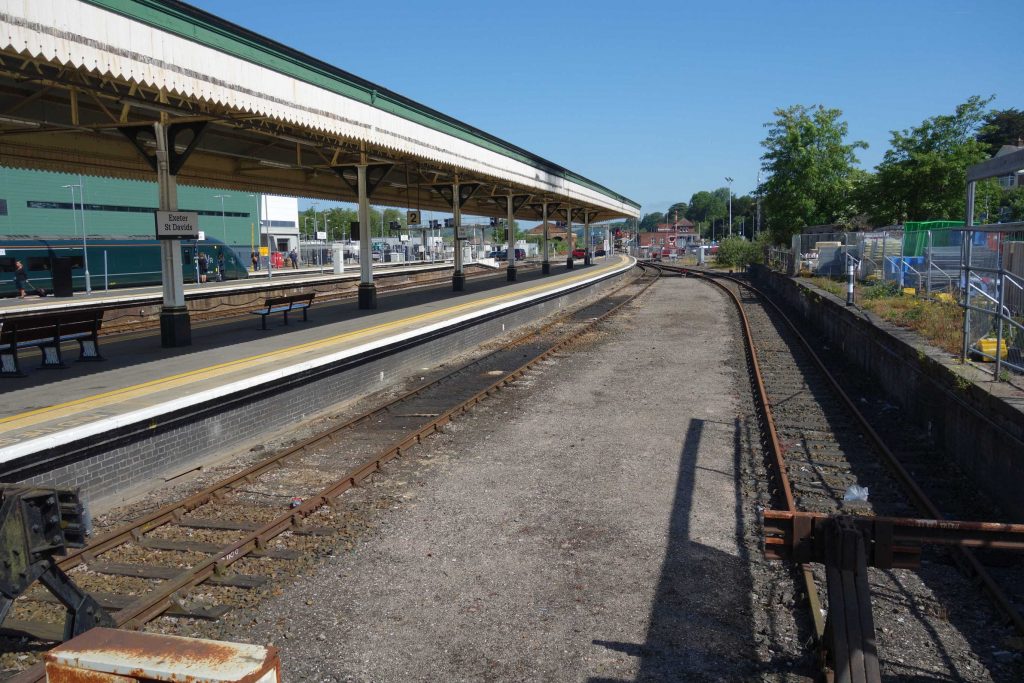
A “temporary” traincrew block stood at right for many years but after the opening of the new depot, built on the site of the former Goods Shed, the area was cleared.
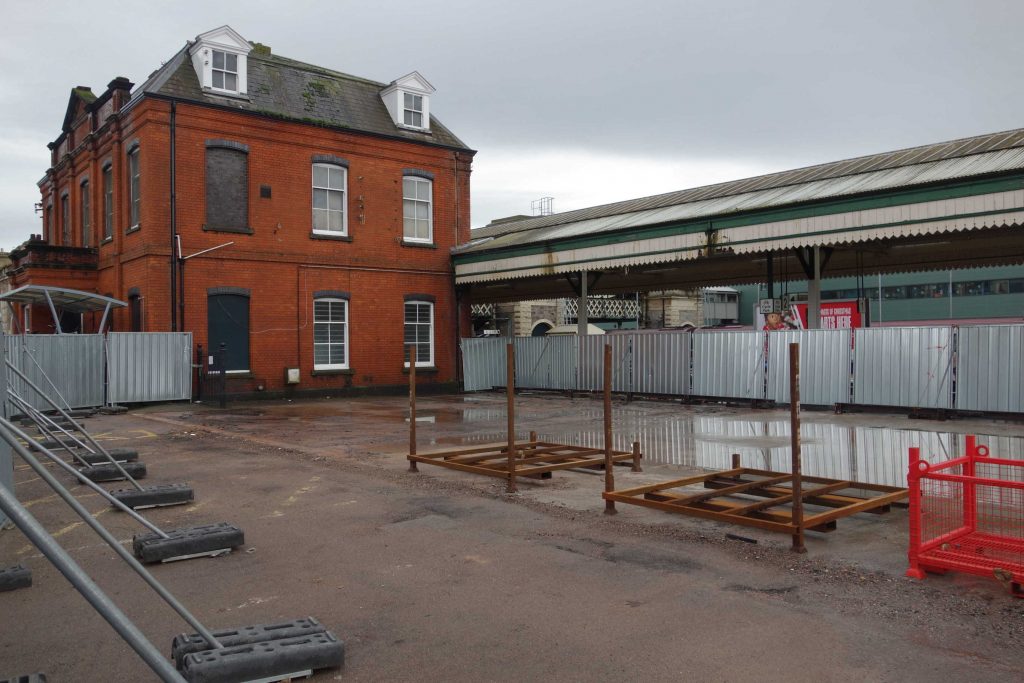
For a few years, the railway’s vans would have been backed in here to be loaded for their rounds.
The carriage chutes were behind where the frame is standing at right. The scout remembers the GUV standing here with its folding doors open, part of the portion to be attached to the Up sleeper train. He has a vague memory of a regular passenger calling into the Movement Supervisor’s Office (on the ground floor with the windows blanked) and leaving his car keys on the desk before going to occupy his (Mark I) berth.
The porters’ room was to the right with a door onto the platform. The scout remembers the timekeeper getting the advice from the signalman at Hele, opening a hatch and calling “Owl!” (Down sleepers) to stir the chaps next door.
The traincrew lobby was in the hall at the centre of the building and the men’s accommodation was upstairs.
A structural defect led to traincrew being accommodated “temporarily” beside Hyde Park and since then the red brick building has been used only for storage. It was to have been demolished to make way for an extension of Platform Two to allow long distance trains to terminate, but it is understood that this scheme has been dropped. It was to have been done by Graham, the contractor responsible for Marsh Barton. Demolition is likely to happen, regardless.
9th July, 2024: With time to spare before his train, the scout had ambled along Platform One. Three officials were viewing the site depicted above and the scout interrupted their waffle. He was told that it was still planned to extend Platform Two but that there was a “funding issue.” And the old Movements building was still to be demolished.

